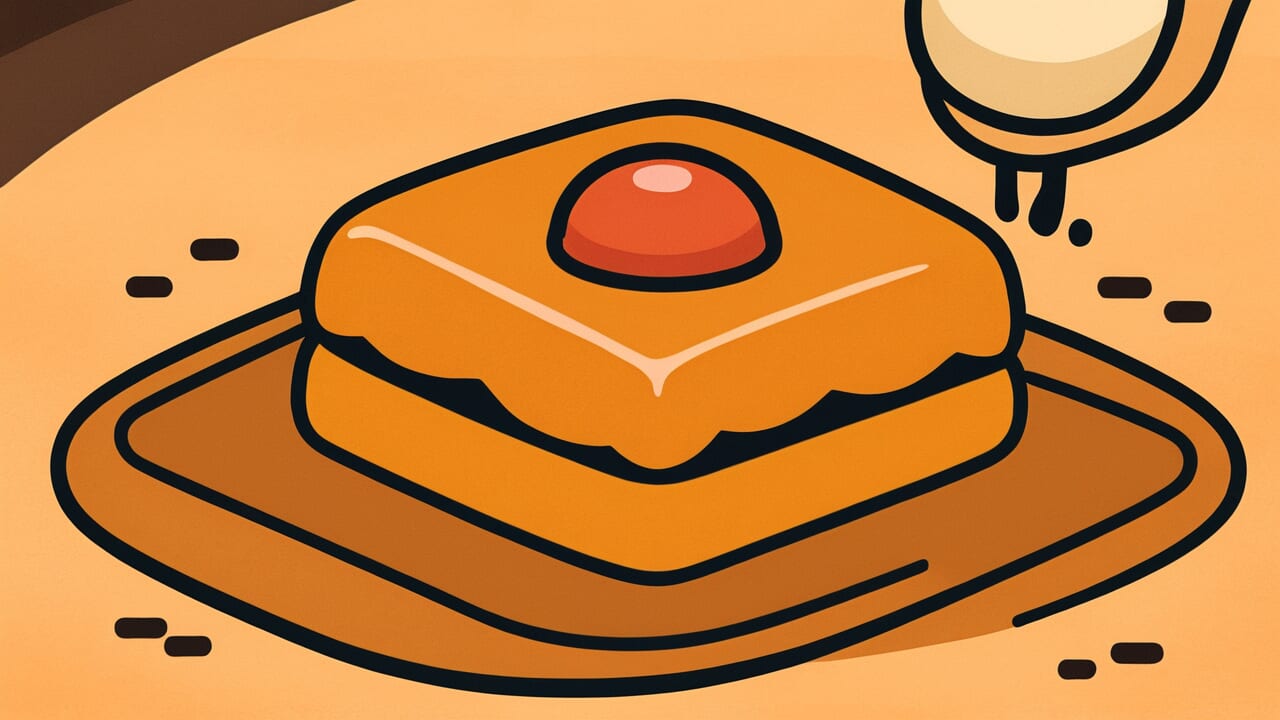How to Read “Mochi with candy”
Ame de mochi
Meaning of “Mochi with candy”
“Mochi with candy” describes a situation that sounds too good to be true.
It’s like eating mochi topped with candy—the deal seems unrealistically sweet and convenient.
This proverb is used when someone offers you something that sounds suspiciously perfect.
You might say, “There’s no way such a mochi with candy deal exists,” to express doubt.
The image works because mochi alone is already delicious. Adding sweet candy on top makes it absurdly good.
In business, this applies to investment offers promising high returns with zero risk.
In daily life, it refers to schemes claiming you can gain big rewards without effort.
Even today, this expression helps people spot scams and suspicious offers.
It’s a warning based on our ancestors’ experience: deals that sound too good always have a catch.
Origin and Etymology
The exact origin of “Mochi with candy” isn’t clearly documented in historical records.
However, we can understand it by looking at the words themselves.
Both candy and mochi have been beloved sweets in Japan since ancient times.
Candy is made by boiling sugar or syrup until it hardens. It spreads sweetness in your mouth.
Mochi is made by steaming and pounding rice. It has a distinctive chewy texture.
The phrase “Mochi with candy” likely refers to eating mochi topped with candy.
Imagine this scene: you’re eating already delicious mochi, but with sweet candy added on top.
This combines sweetness upon sweetness—a situation where everything is perfect.
Normally, mochi alone is satisfying enough. Adding candy makes it unrealistically good.
This proverb probably emerged from everyday life during the Edo period.
Back then, sweet foods were precious. Both mochi and candy were special treats.
Enjoying both luxuries at once seemed like an impossible dream.
From this image came the meaning: be cautious of deals that seem impossibly convenient.
Japanese wisdom warns us that overly sweet offers usually hide something bitter underneath.
Usage Examples
- That investment sounds like mochi with candy—too suspicious. You should research more before signing anything.
- Making a million yen monthly with no risk? That’s mochi with candy, which actually makes me worried.
Universal Wisdom
“Mochi with candy” has endured because it captures an eternal human conflict.
It speaks to our desire to jump at good offers and our fear of being deceived.
Everyone wishes they could find happiness without struggle.
Success without effort, profit without risk—wouldn’t that be wonderful?
This desire is a timeless part of human nature. That’s why sweet offers tempt us.
But humanity has also learned hard lessons throughout history.
Pure luck rarely exists in this world. Deals that sound too good always hide something.
Scams and traps prey on human desire. They approach with sweet words.
They dull your judgment, and by the time you realize it, it’s too late.
Our ancestors repeated this bitter experience many times.
This proverb uses the delicious image of “Mochi with candy” while delivering a serious warning.
Human desire isn’t something to reject. But we shouldn’t let it blind us.
We must develop eyes that see the truth hidden behind sweetness.
That ability to see clearly is the wisdom that protects our lives.
When AI Hears This
Candy and mochi both contain carbohydrates as their main component, yet exist in completely different material states.
Candy is rapidly cooled, giving molecules no time to arrange themselves orderly.
They solidify in random positions, creating a glassy state.
Mochi, meanwhile, is a viscoelastic material where starch molecules repeatedly crystallize and decrystallize while retaining moisture.
This difference isn’t just about appearance. Their molecular structures are fundamentally distinct.
Crucially, this transformation only proceeds in one direction.
Drying mochi won’t turn it into candy. Soaking candy won’t make it mochi.
This follows the second law of thermodynamics: entropy always increases.
Matter can move toward disorder but cannot spontaneously return to order.
Just like you can’t unscramble an egg.
Even more interesting: candy’s glass transition temperature ranges from 30 to 70 degrees Celsius.
This differs completely from the temperature range where mochi exhibits viscoelasticity.
Under identical temperature conditions, they never display the same properties.
Their incompatibility isn’t about preference or custom. It’s an absolute fact determined by physical laws.
Lessons for Today
“Mochi with candy” teaches modern people the importance of “healthy skepticism” in our information-saturated age.
The internet and social media overflow daily with attractive offers.
Easy side jobs, instant weight loss, business models guaranteeing success for anyone.
Sweet invitations arrive constantly from behind our screens.
In such times, the habit of pausing to think becomes essential.
When you hear a good offer, ask yourself: “Why are the conditions so favorable?”
Also ask: “What does the other party gain from this?”
If the proposal has real value, honest answers will come back to your questions.
But watch out for people who dislike questions or rush you to decide.
However, this proverb doesn’t mean “doubt everything.”
Healthy skepticism differs from excessive paranoia.
What matters is the ability to judge calmly while maintaining hope.
You need eyes that recognize opportunities and wisdom that avoids traps.
With both, you can seize truly valuable chances while protecting yourself from unnecessary risks.



Comments